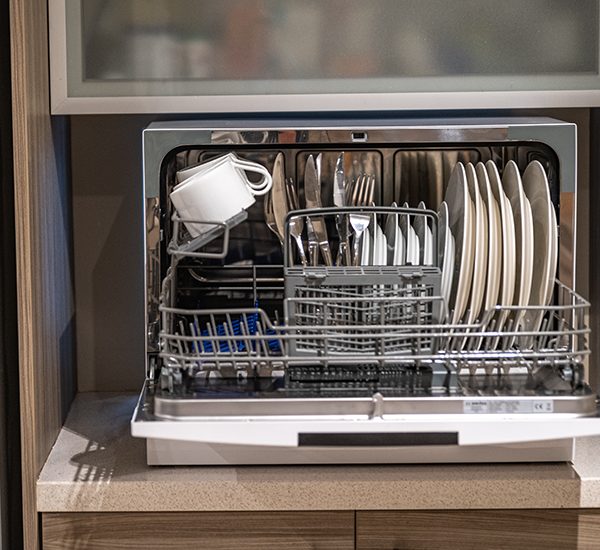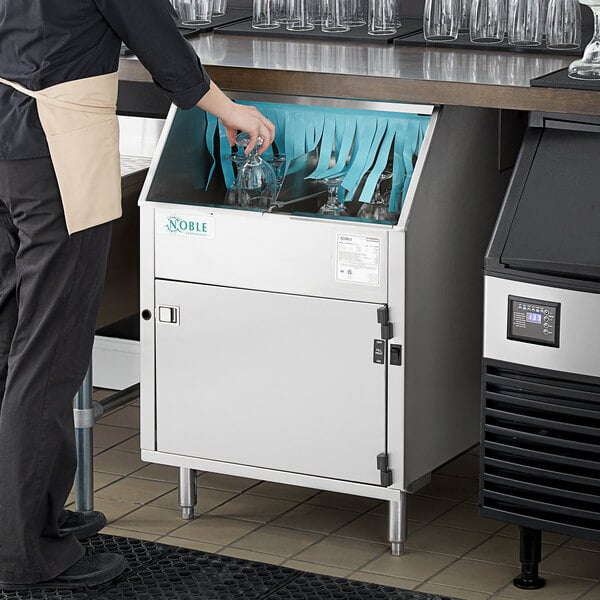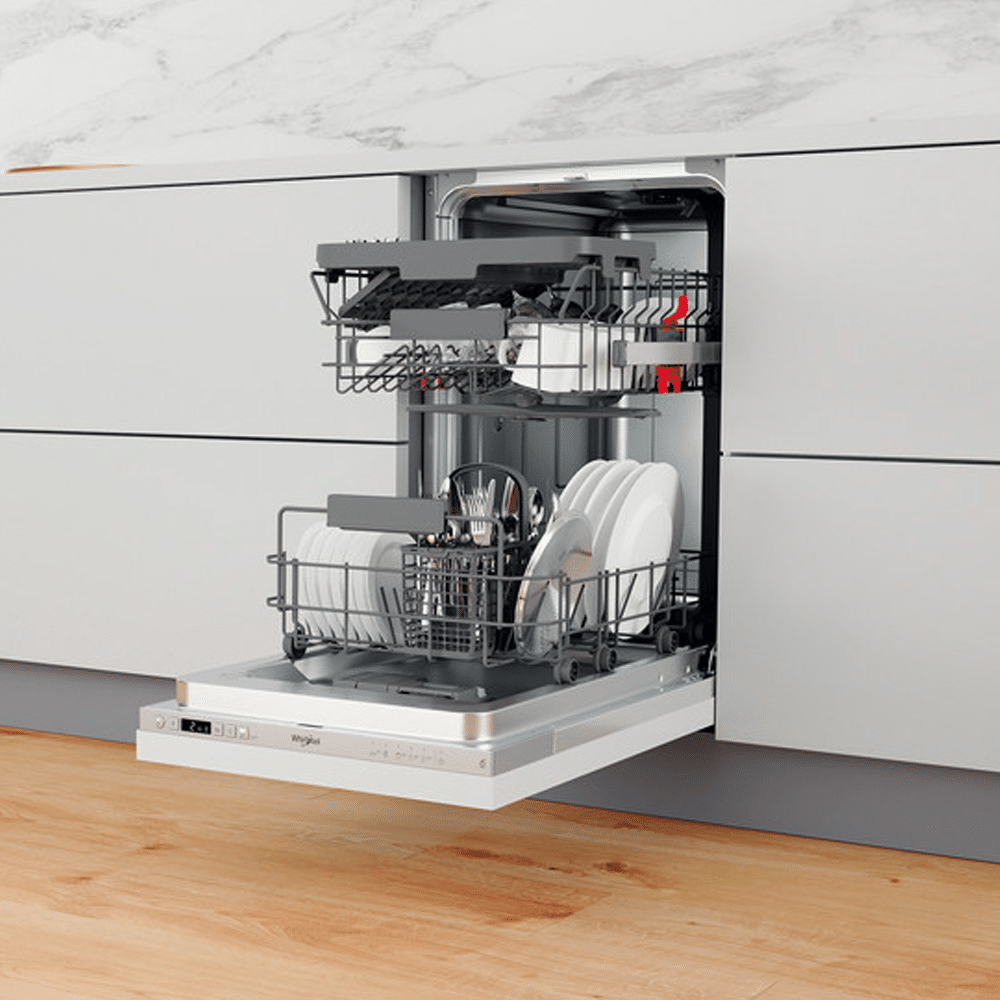The Origins of the Dishwasher
When was the dishwasher invented? The fascinating journey of the dishwasher begins over 160 years ago. In the mid-19th century, Joel Houghton patented a basic design, pegged as the first iteration of a mechanical dish cleaner. This early model merely splashed water over dishes, a far cry from the sophisticated machines we use today.
Early Attempts and Innovations in Dishwashing
Houghton’s rudimentary machine in 1850 showcased the potential for dishwashing aids. Despite its simplicity, the concept set the stage for innovation. Following this, a cascade of attempts to simplify the dishwashing process emerged. Hand-cranked models and water jets targeted the drudgery of hand washing, though these early machines were inefficient and labor-intensive.
Josephine Cochrane’s Significant Contributions
Josephine Cochrane’s genius came to the forefront when she revolutionized the dishwasher design in 1886. Her motivation stemmed from a dislike for handwashing dishes and a desire to protect her delicate china. Cochrane’s model introduced a mechanical wheel and water jets for cleaner dishes and less breakage. This innovation earned her machine wide acclaim, including an award at the Chicago World’s Fair in 1893. Cochrane’s work laid the foundation for what would become an indispensable kitchen appliance in modern homes.
Technological Evolution Post-World War II
The post-World War II era marked a significant turning point in dishwasher technology. With advancements in engineering and a shift in household dynamics, the appliance that was once a luxury became a more common fixture in kitchens.
Adoption of Automatic Dishwashers
By the 1950s, automatic dishwashers began capturing public interest. These machines showcased built-in heating elements, detergent dispensers, and multiple wash cycles. They no longer required manual labor, transforming a once cumbersome chore into a simple task. This era catalyzed the dishwasher’s journey into mainstream homes.
Introduction of Energy Efficiency and Advanced Features
The quest for energy efficiency started in earnest during the 1970s. Dishwashers from this period onward included features aimed at conserving resources. Energy Star certification became a goal, reflecting a growing environmental consciousness. Innovations like improved water filtration, adjustable racks, and sensor-driven cycles emerged, representing the cutting-edge of dishwasher technology.
Defining Features of Modern Dishwashers
From their simple beginnings, modern dishwashers have evolved to boast an array of defining features. These advancements have transformed kitchen chores, making dish cleaning efficient and user-friendly.
Quiet Operation and Multiple Wash Cycles
Early dishwashers were loud, often drowning out conversation in the home. Today’s models emphasize quiet operation, allowing use at any time without disturbance. Alongside this, the advent of multiple wash cycles caters to various dish types and soil levels, providing tailored cleaning that wasn’t possible in the first machines.
Advanced Water Filtration and Adjustable Racks
Modern dishwashers also possess advanced water filtration systems, ensuring dishes are rinsed with clean water throughout the cycle. The convenience is further bolstered by adjustable racks, which can accommodate an array of dish sizes, from large pots to delicate glassware.
How Sensors and Smart Technology Shape Today’s Dishwashers
Smart technology has introduced sensors that detect soil levels and adjust settings automatically, optimizing resource use. With smartphone integration, users can now control and monitor their dishwasher remotely, signifying a leap in convenience and efficiency.
The Role of Dishwashers in Modern Homes
Dishwashers as a Standard Household Appliance
Dishwashers, once a rarity, have become essential in most American kitchens. Signaling the end of tedious dishwashing by hand, they save precious time in today’s busy lives. Families can enjoy meals without the looming task of cleanup. Aside from convenience, dishwashers also offer a more effective and hygienic way to clean. With options ranging from basic models to high-tech units, there’s a dishwasher for every home and lifestyle.
Environmental Impact and Conservation of Resources
When the dishwasher was invented, conserving resources was not a priority. However, modern dishwashers reflect today’s environmental concerns. They use far less water than hand washing does, with some models saving up to 5,000 gallons per year. Energy Star-certified machines especially stand out. They require less power and water while maintaining top-notch cleaning efficiency. By choosing such appliances, homeowners support conservation and in turn, reduce their utility expenses. This commitment to sustainability ensures that dishwashers play a vital role not just in our homes, but also in protecting our planet.
Health and Sanitation Benefits
The health and sanitation advantages of dishwashers over traditional hand washing are significant and well-documented. Understanding these benefits can influence our approach to dish cleaning and overall kitchen hygiene.
Dishwashers vs. Hand Washing: A Sanitary Comparison
When dishes are washed by hand, the process often falls short of the sanitary standards achievable by modern dishwashers. Dishwashers can reach temperatures up to 145°F, a level that’s effective in killing bacteria and germs and is too hot for hands to tolerate. The force of the water jets also helps remove food and grime more effectively, ensuring a thorough clean. These machines use specially formulated detergents that are more adept at sanitizing than typical hand soap.
The Hidden Dangers of Hand Washing Dishes
Hand washing dishes exposes us to the risks of cross-contamination, significantly when a single sponge is used for all tasks. Studies have revealed that kitchen sponges harbor high levels of bacteria and can spread these pathogens to every dish washed. In contrast, dishwashers provide a sealed, sanitized environment, reducing the risk of cross-contamination from bacteria, like E. coli and salmonella, found on sponges and dishcloths.
Choosing the Right Dishwasher for Your Home
Choosing a dishwasher may seem straightforward, but it requires careful thought. Different homes have different needs, and the array of options available can be overwhelming.
Balancing Features, Size, and Efficiency
When selecting a dishwasher, consider the size of your household and kitchen space. Larger families may need full-sized models, while couples could opt for compact versions. Look for adjustable racks for flexibility with different dish sizes. Efficiency is key, so seek out models with multiple wash cycles. These tailor cleaning power to dish soil level, saving water and energy. Dishwasher noise levels matter, especially in open-concept homes. Choose a unit that promises quiet operation.
Investing in Energy Star-Certified Appliances
Environmentally conscious consumers value Energy Star-certified dishwashers. These models use less water and electricity, cutting costs and conserving resources. Over time, the savings on utility bills can offset the higher upfront cost of the appliance. When ‘when was the dishwasher invented’ crosses your mind, remember modern options show how far this invention has come. Investing in an Energy Star-certified dishwasher means investing in a legacy of innovation and sustainability.
Conclusion and Reflection on Dishwasher Innovation
The saga of the dishwasher is a tale of progress. What began as a wooden box with a hand crank has turned into a household staple. When was the dishwasher invented? This journey mirrors the pace of human ingenuity and adaptation to changing lifestyles.
The Dishwashing Revolution from Simple Origins to Complex Machines
From hand-cranked simplicity to machines that boast AI, dishwashers have come a long way. Joel Houghton’s wooden invention laid the groundwork. Josephine Cochrane’s ‘Lavaplatos’ brought automation in 1889.
Later, dishwashers gained drying capabilities and quieter operation. They adopted multiple wash cycles and adjustable racks. Modern dishwashers conserve water and energy while delivering stellar performance. Sensors now adjust wash cycles, saving resources. Smart tech lets us control appliances remotely.
This progress reflects our values and needs. Convenience, efficiency, and eco-friendliness define today’s dishwashers. They fulfill chores with ease and uphold high hygiene standards. Each model, from basic to advanced, stands as a tribute to the past’s simple machines.
When was the dishwasher invented? As we honor the dishwasher’s invention timeline, we acknowledge a shift in our approach to chores. We value time, health, and the environment more than ever. The evolution of the dishwasher from its humble beginnings to the smart, efficient appliances we know today symbolizes this change. It’s a revolution that has made kitchens smarter, homes more eco-friendly, and daily life just a touch easier.








